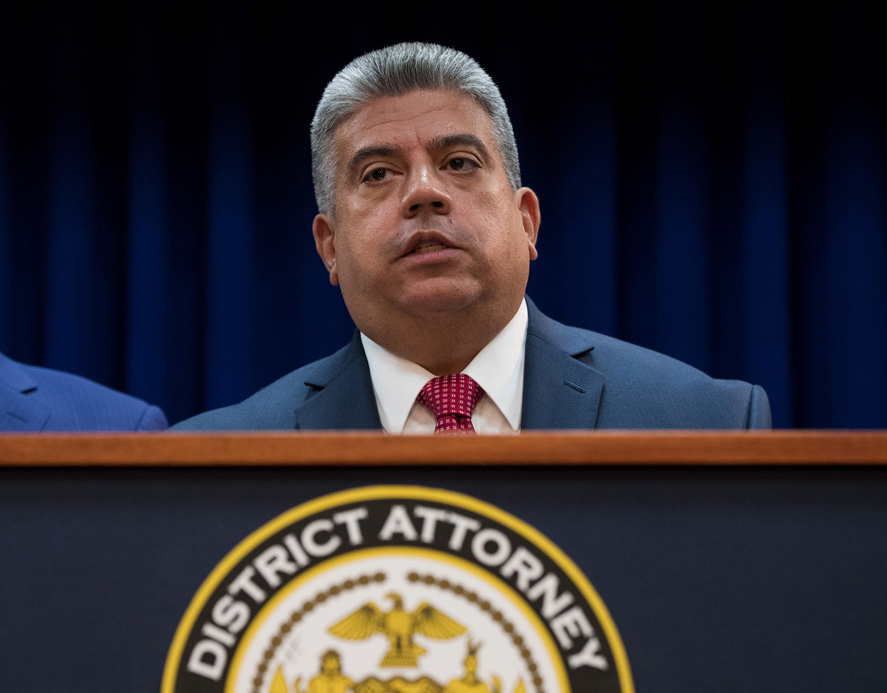

Prosecutor’s “Hearsay” Evidence Causes Wrongful Conviction
By Stephanie Don
BROOKLYN – A robbery-gone-wrong resulted in four injured victims, one burned victim, and one homicide—and Zander Wright, a pseudonym, was convicted of all charges, including felony murder, and sentenced to 25 years to life in prison.
However, in a report by Brooklyn District Attorney Eric Gonzalez, his office’s Conviction Review Unit (CRU) recommended that Wright’s conviction be vacated after finding issues in his case, including prosecutor and defense conduct, that prevented him from receiving a fair trial.
Before his exoneration, Wright served about 20 years in prison.
In 1995, eight armed males entered an apartment with eight other individuals, demanding money and drugs. Upon leaving, at least two of the intruders shot guns as they left, injuring four, burning one, and killing one of the eight victims.
During the investigation, police interviewed seven of the eight individuals in the apartment and one witness who was not in the apartment but lived in the apartment building. One of the witnesses—identified as R.B.—positively identified seven males in a photo array, including Wright.
Wright was arrested and allegedly stated that he was “at the apartment, had a gun, and was involved in the robbery along with the others he named.” However, later the same day, Wright made a  videotaped confession that he “participated as a look-out in the felony murder.”
videotaped confession that he “participated as a look-out in the felony murder.”
According to the CRU, the second videotaped confession was “inconsistent in several key respects with his first statement.” Wright later claimed his confession was coerced, but the CRU did not find the facts of the confession to be unreliable.
Before Wright’s trial, R.B. disavowed her identification of Wright, telling one of the investigating detectives that she only knew Wright from the building and could not identify him as involved in the crime. The CRU could not determine if the prosecutor disclosed R.B.’s disavowal of her identification of Wright.
At trial, R.B. and another victim implicated some of Wright’s co-defendants. When questioned, victims identified Wright as having lived in the building, but did not identify him as a participant in the crime, even though the prosecutor asked R.B. “artfully sequenced questions” to implicate Wright as a perpetrator.
To do this, the prosecutor had R.B. establish that two of the eight perpetrators were a man named Q.H. and someone who lived on the second floor of the apartment building. Then the prosecutor had R.B. testify that the only people in the courtroom who lived in the apartment building were Wright and his parents, without specifying the floors the Wrights lived on.
The prosecutor finally had R.B. testify that she had viewed a line-up and “recognized” Wright in the line-up as “living in the building.”
However, the prosecutor did not establish that R.B. had not identified Wright as a perpetrator or that Wright lived on the twelfth floor, not the second floor.
The prosecutor had the partner of the first investigating detective testify on the line-up procedures, despite the fact that the testimony was irrelevant because R.B.’s disavowal of her positive identification of Wright.
The detective also testified R.B. had previously identified Wright as a perpetrator by being allowed to read his partner’s notes, which the CRU described as “clearly hearsay and never should have been permitted to be read to the jury.”
In trial, the prosecutor also asked the investigating detective if Wright had been notified that his co-defendants had already been convicted. The CRU deemed his question “improper,” as it notified the jury of the convictions of the other, separate cases, and implied “guilt by association.”
The CRU concluded that the prosecutor “went to great lengths” to have R.B. and the detective testify about the line-up procedure in order to strongly suggest R.B. identified Wright as one of the perpetrators. If the prosecutor had no usable eyewitness identification, the prosecutor would have to use Wright’s confession as their only evidence.
In addition, because the defense attorney was not alerted of R.B.’s disavowal, Wright’s defense attorney could not object to the “hearsay” evidence. The court also did not clarify the prosecutor’s strategy, leading to the successful misleading of the jury.
After serving around 20 years of his 25 years to life sentence, Wright was exonerated. The multiple issues in prosecutor and defense conduct will be used to prevent future wrongful convictions.
To sign up for our new newsletter – Everyday Injustice – https://tinyurl.com/yyultcf9
